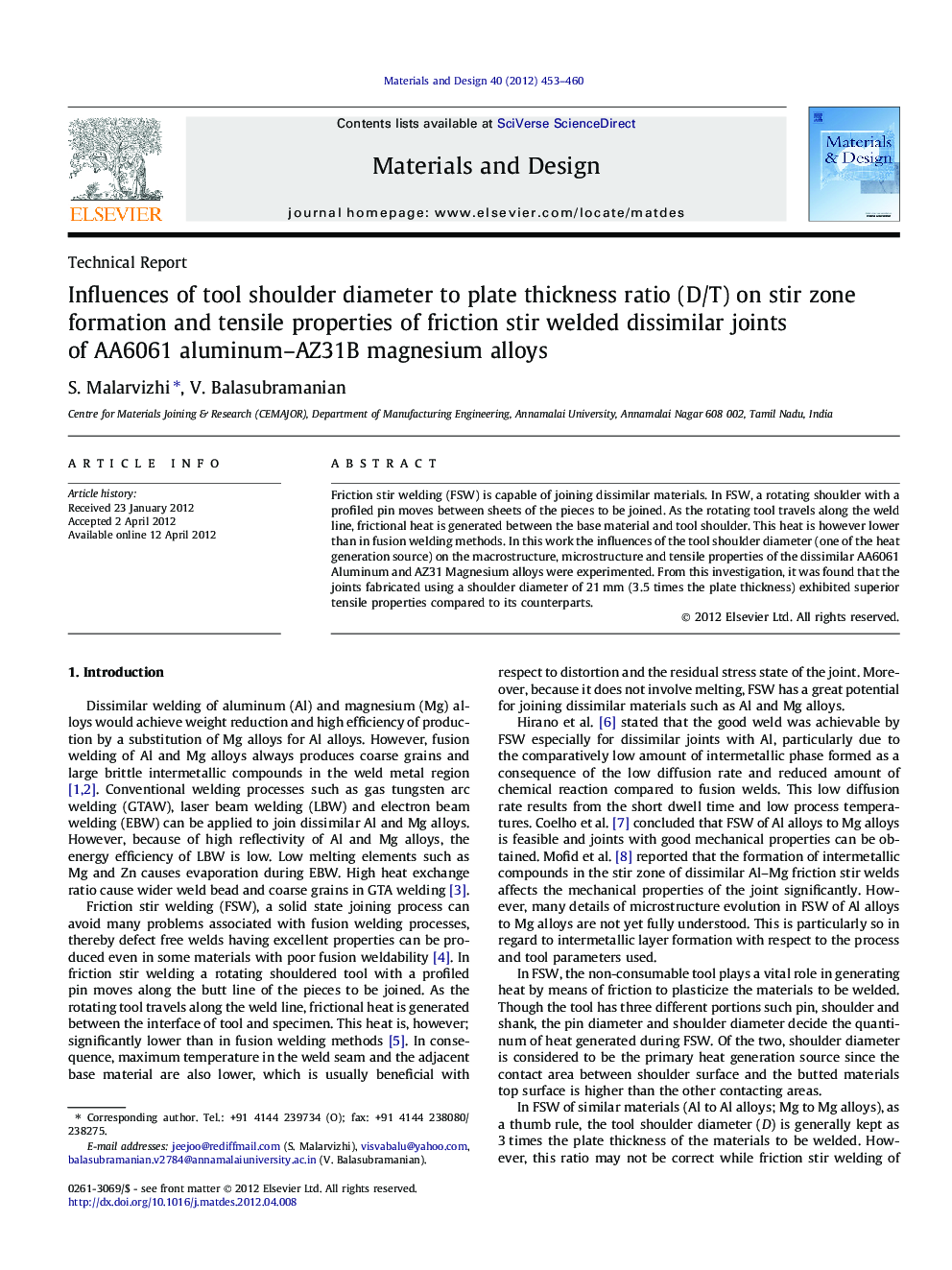| کد مقاله | کد نشریه | سال انتشار | مقاله انگلیسی | نسخه تمام متن |
|---|---|---|---|---|
| 830625 | 1470357 | 2012 | 8 صفحه PDF | دانلود رایگان |

Friction stir welding (FSW) is capable of joining dissimilar materials. In FSW, a rotating shoulder with a profiled pin moves between sheets of the pieces to be joined. As the rotating tool travels along the weld line, frictional heat is generated between the base material and tool shoulder. This heat is however lower than in fusion welding methods. In this work the influences of the tool shoulder diameter (one of the heat generation source) on the macrostructure, microstructure and tensile properties of the dissimilar AA6061 Aluminum and AZ31 Magnesium alloys were experimented. From this investigation, it was found that the joints fabricated using a shoulder diameter of 21 mm (3.5 times the plate thickness) exhibited superior tensile properties compared to its counterparts.
► Friction stir welding of dissimilar aluminum–magnesium alloys is reported.
► The effect of shoulder diameter to plate thickness on the properties were studied.
► Microstructure, microhardness and tensile properties were evaluated.
► Shoulder diameter to plate thickness ratio of 3.5 yielded superior properties compared to other joints.
Journal: Materials & Design - Volume 40, September 2012, Pages 453–460